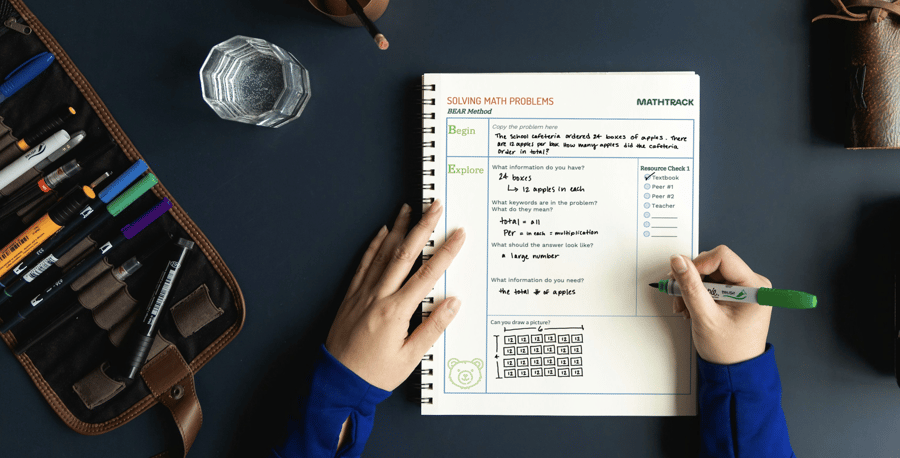How to Create a Fourth Grade Math Worksheet That Builds Mastery Through Meaning
How to Create a Fourth Grade Math Worksheet That Builds Mastery Through Meaning
Many teachers look for ready-made third-grade math worksheets, but the most effective tools can be the ones you create yourself—tailored to your students’ needs and anchored in your classroom’s story of learning.
If you are interested in participating in a fellowship through MathTrack Institute about these topics, you can learn more here:
By fourth grade, mathematics shifts from exploring foundational concepts to applying them in broader, more connected ways. Students extend their understanding of multiplication and division, dive deeper into fractions, and begin interpreting larger data sets. A worksheet at this level should both challenge and empower—helping students see the structure beneath the surface and the story behind the skill.
When designed with intention, a worksheet becomes more than a set of problems. It becomes a scaffold for students to explore the “why” behind the “how,” and to see themselves as mathematicians capable of navigating complexity.
Below are the major fourth-grade math standards and ideas for designing worksheets that align with them while keeping the learning narrative alive.
1. Multi-Digit Multiplication and Long Division — Leading Roles in the Story
Standards Connection: Fluently multiply multi-digit whole numbers using strategies based on place value and properties of operations; divide with remainders.
Worksheet Idea:
- Two- and three-digit multiplication problems in both standard algorithm and area model formats.
- Division problems with and without remainders, including real-world contexts.
- Mixed multiplication and division fact review to reinforce the relationship between the two.
Storytelling Lens: We think of teachers as storytellers. Through this role, multiplication and division have matured into leaders of the mathematical narrative. They are no longer solving just small puzzles—they’re orchestrating large-scale solutions. A worksheet can position them as powerful, connected characters that solve challenges in tandem.
2. Fractions — Expanding the Cast and the Plot
Standards Connection: Extend understanding of fraction equivalence and ordering; add, subtract, and multiply fractions by whole numbers.
Worksheet Idea:
- Compare fractions with different denominators using visual models and number lines.
- Add and subtract fractions with like denominators.
- Multiply fractions by whole numbers in contextual problems.
Storytelling Lens: We think of teachers as storytellers. Through this role, fractions in fourth grade are more than guests—they’re recurring characters whose relationships grow more complex. Students begin to see how these characters interact, combine, and transform. The worksheet becomes the stage for these interactions, making abstract relationships visible and tangible.
3. Geometry — Plotting Points and Classifying Shapes
Standards Connection: Draw points, lines, line segments, rays, angles, and perpendicular and parallel lines; classify shapes by properties.
Worksheet Idea:
- Identify and draw geometric features within given figures.
- Classify shapes based on lines and angles.
- Introduce coordinate plane basics with simple plotting exercises.
Storytelling Lens: We think of teachers as storytellers. Through this role, Geometry adds new “rules of the world” to the math story—rules about direction, location, and structure. A worksheet can help students navigate this world, showing how shapes belong to different families and how coordinates create precise maps of mathematical space.
4. Measurement and Data — Adding Structure to the Setting
Standards Connection: Solve problems involving measurement and conversion of units; represent and interpret data.
Worksheet Idea:
- Multi-step word problems requiring unit conversions (e.g., feet to inches, minutes to hours).
- Line plots with fractional data, followed by interpretive questions.
Storytelling Lens: We think of teachers as storytellers. Through this role, units and data are the tools and blueprints of the mathematical setting. They allow students to describe and navigate the world with precision. A worksheet can frame these problems as challenges where the right “tools” unlock the solution.
5. Decimals — New Characters Joining the Number World
Standards Connection: Read, write, and compare decimals to hundredths; use place value understanding to round decimals.
Worksheet Idea:
- Place decimals on number lines and compare them.
- Round decimals to the nearest tenth or hundredth.
- Solve word problems involving money as a real-world context for decimals.
Storytelling Lens: We think of teachers as storytellers. Through this role, decimals are new arrivals that extend the familiar place value landscape. A worksheet can guide students through meeting these characters and understanding how they connect to fractions, whole numbers, and real-world quantities.
6. Reflection — Seeing the Story in the Work
Even in upper elementary, reflection remains key. Include space for prompts such as:
- “What strategy helped you most today?”
- “Which problem made you think the hardest?”
- “How are today’s problems connected to something you’ve learned before?”
These help students recognize the narrative threads that run through their learning.
This mirrors the Reflect stage from the BEAR worksheet—encouraging students to see themselves as co-authors of their learning story. You can download an example of that here:
Final Thoughts
A fourth-grade math worksheet should feel like a chapter where the plot thickens—where established characters face new challenges, new characters arrive, and the connections between ideas become clearer. By framing problems in context and keeping the focus on meaning, you help students not only perform the skills but also understand their purpose in the larger mathematical story.
When students see how today’s work links to what they’ve learned before—and what’s still to come—they stay engaged, curious, and confident in their ability to navigate the journey.


